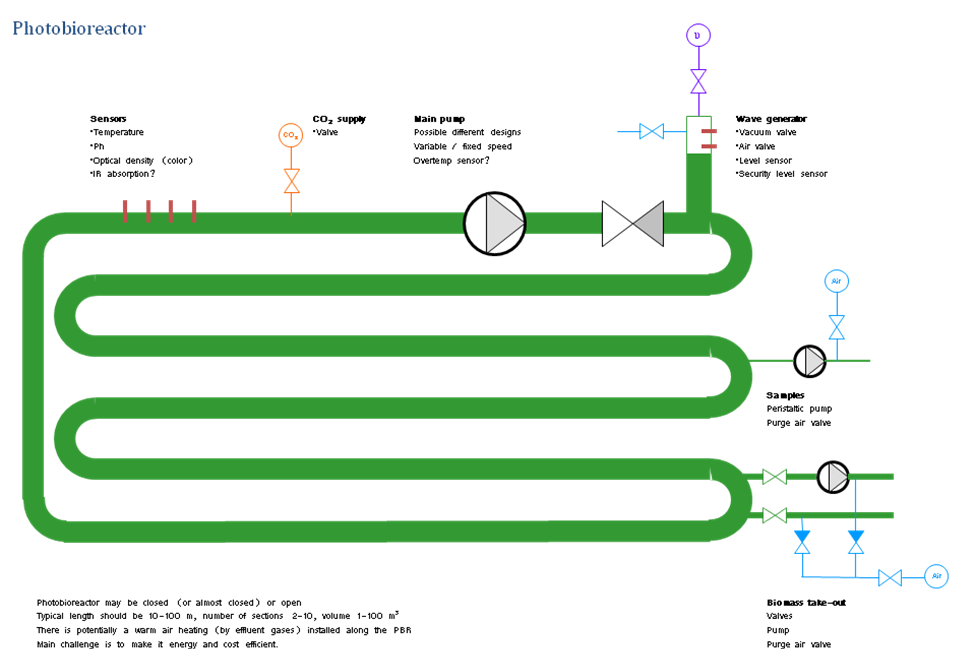Main menu
You are here
Photobioreactor - Control System basic functional requirements
A photobioreactor (PBR) may have many different forms. PBR is basically a closed or open container with media solution exposed to sunlight (in some cases even using artificial light) that is used to grow algae.
The simplest form of PBR is open-pond system, a raceway shaped shallow pool. Other forms may have tubular containers configured in horizontal or vertical arrangements. The tubes may be made of hard or soft material. The medium path may be made from serpentine arrangement of foiled containers or any other form.
The essential characteristic sought for in PBR is adequate price for the given volume, surface and light energy capture. All forms of PBR have some mechanism enabling mixing of media. This has several functions: actual mixing that allows nutrients and biomass to be evenly mixed, providing even exposure of algae to lighter and darker areas in PBR, prevention of flocculation and sedimentation of algae, prevention of algae sticking to the PBR walls, mixing of gases into and out of the media (O2 that is produced by algae, and CO2 that is fed into the media), etc.
The mixing mechanism is generically called a pump, but it may also be a paddle-wheel. In general a sufficient level of nutrients has to be maintained in the media solution in PBR. The nutrient composition is specific for each species and even specific for different growth phases of species.
One of the essential conditions for algae growth is pH level that needs to be kept within certain range. pH is usually regulated by introducing appropriate quantity of CO2 into the media when pH is higher that the desired value. This process should be automatic, as pH can change very rapidly in the period of intense growth. A reliable pH measurement is not possible without good temperature compensation, so a temperature sensor is also required.
A common way to measure biomass concentration within a PBR is optical density measurement. This density has to me measured at certain wavelengths, but this wavelength differs for different species. For this reason a good indicator for algal concentration is color reflective measurement. After such procedure is calibrated for a specific species, it is a very accurate indicator of algal density in the solution.
It has been empirically determined that some species require much more agitation of the media. For these we provide a wave generator, a device that sends a violent wave across the PBR from time to time. This kind of motion need not be frequent, but is has to be forceful. We envision a vacuum based wave generator, that uses vacuum to lift a water column to certain height and then abruptly releases it.
PBR need to be of appropriate size: big volume is quite economical but it presents a greater risk of contamination or cross inoculation. An optimal size is therefore such that an infection in one PBR will not spoil all production.





